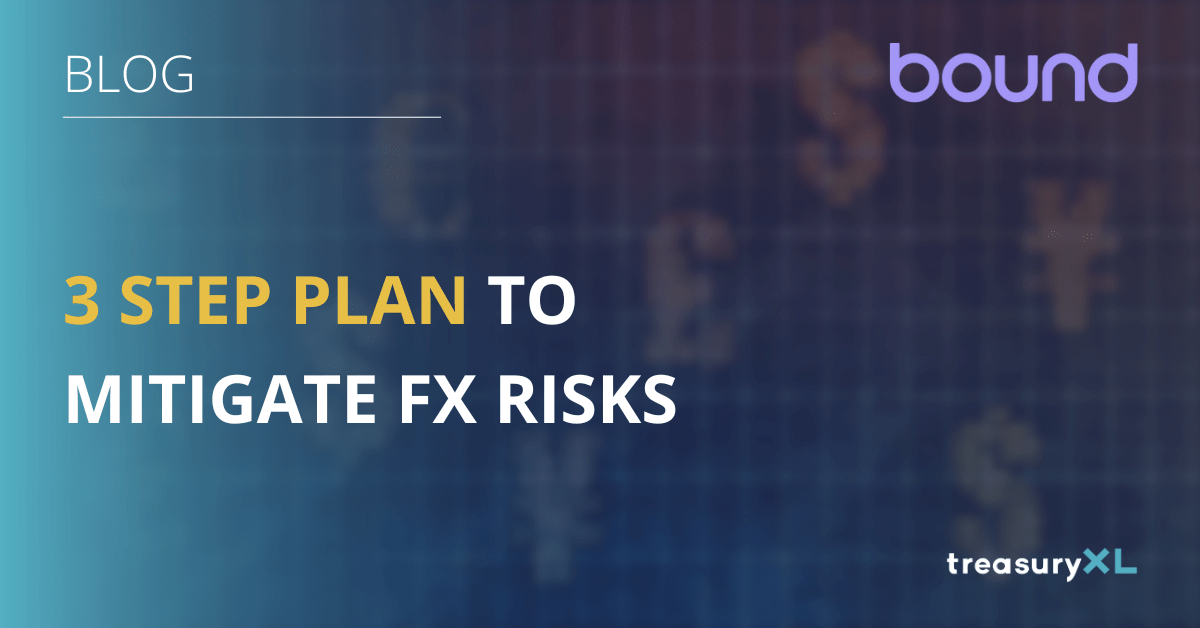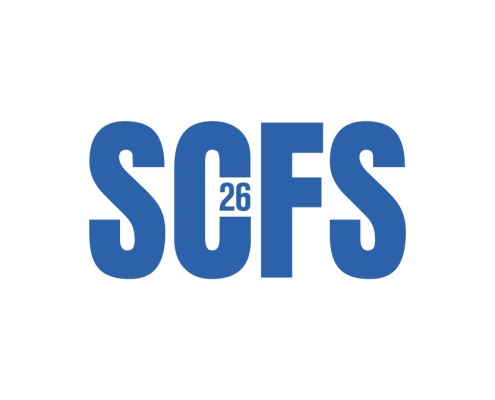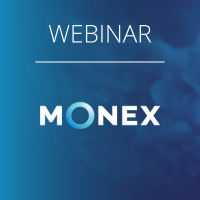FX Hedging that is flexible enough for the real world
By Bound
Many companies that operate internationally face significant risks due to fluctuating exchange rates, but surprisingly, most don’t take action to manage this exposure.

Many companies don’t want risk to exchange rates
Most of the companies we talk to aren’t looking to actively place bets on currencies. They reluctantly do business in other currencies to access more customers or better suppliers (including international staff).
Every time they agree to future revenue or costs paid in another currency, they have risk that the moving exchange rate can make their cash flows unstable and unpredictable.
However, many don’t do anything about the risk they have
Surprisingly, even though most of these don’t want exposure to exchange rates, most aren’t actively managing that risk. They know the risk is there. They don’t want it. But, they’re not dealing with it at all or have a haphazard strategy.
Why? Assumption: Hedging is hard and rigid
One of the most common reasons companies give for not hedging their unwanted currency risk is that their cash flows are fluid and somewhat unpredictable. Hedging feels complicated and rigid.
Flexibility with Bound
Let’s go through some examples of how Bound is making it easier to hedge currencies with the flexibility that real companies need.
Let’s pretend we are a UK-based, GBP-based company and we have roughly USD 100,000 in costs. We’ve budgeted (and hedged out those costs for 8 months – until the end of our currency budget cycle).
Let’s go through some quick examples.
Help! My numbers are higher than I expected! USD costs came in at 120,000.

Help! My numbers are lower than I expected! USD costs only came in at 90,000.

Help! My dates have changed! I need my USD a few weeks early than expected.

Help! My project has been broken into pieces! I need some money now and some later!

Help! My entire project has been canceled. What can I possibly do now?

A quick note about costs. Some of these amendments have some costs and may be impacted by the volatility of the markets.
Here’s how we think about this. In most scenarios, customers would just use that extra money in a different month, but in extreme situations, we might need to cancel something.
-
In this pretend scenario, we had expected USD 100,000 per month for 8 months. So, a total of USD 800,000. If I just use the spot-market to buy that USD, my exposure is something like this:
-
USD 800,000 * however much the market might move
-
-
When using Bound and hedging, I was off by small amounts here and there and completely off one month. My ultimate exposure was something like this:
-
USD 110,000 (net amount I was ultimately off) * however much the market might move
-
-
I reduced the exposure the company had by 86%! And that included being completely off for one month.
Hedging isn’t about getting it perfect. It’s about minimising exposure and making cash flows as stable and predictable as possible for your business!
Can’t get enough? Check out these latest items
 https://treasuryxl.com/wp-content/uploads/2024/01/Template_VACANCY-featured.png
200
200
treasuryXL
https://treasuryxl.com/wp-content/uploads/2018/07/treasuryXL-logo-300x56.png
treasuryXL2026-01-16 07:00:102026-01-15 16:00:18Vacancy Ambitious Treasury Analyst – Rotterdam
https://treasuryxl.com/wp-content/uploads/2024/01/Template_VACANCY-featured.png
200
200
treasuryXL
https://treasuryxl.com/wp-content/uploads/2018/07/treasuryXL-logo-300x56.png
treasuryXL2026-01-16 07:00:102026-01-15 16:00:18Vacancy Ambitious Treasury Analyst – Rotterdam https://treasuryxl.com/wp-content/uploads/2026/01/SCFS26-logo_blue_200x200.png
833
833
treasuryXL
https://treasuryxl.com/wp-content/uploads/2018/07/treasuryXL-logo-300x56.png
treasuryXL2026-01-15 14:53:532026-01-15 16:01:3812th Supply Chain Finance Summit
https://treasuryxl.com/wp-content/uploads/2026/01/SCFS26-logo_blue_200x200.png
833
833
treasuryXL
https://treasuryxl.com/wp-content/uploads/2018/07/treasuryXL-logo-300x56.png
treasuryXL2026-01-15 14:53:532026-01-15 16:01:3812th Supply Chain Finance Summit https://treasuryxl.com/wp-content/uploads/2022/07/Coty.png
200
200
treasuryXL
https://treasuryxl.com/wp-content/uploads/2018/07/treasuryXL-logo-300x56.png
treasuryXL2026-01-15 13:45:042026-01-15 13:45:04Intern Commercial Finance @ Coty
https://treasuryxl.com/wp-content/uploads/2022/07/Coty.png
200
200
treasuryXL
https://treasuryxl.com/wp-content/uploads/2018/07/treasuryXL-logo-300x56.png
treasuryXL2026-01-15 13:45:042026-01-15 13:45:04Intern Commercial Finance @ Coty https://treasuryxl.com/wp-content/uploads/2025/11/FinanceKey-Featured.png
200
200
treasuryXL
https://treasuryxl.com/wp-content/uploads/2018/07/treasuryXL-logo-300x56.png
treasuryXL2026-01-15 08:18:112026-01-15 08:18:11Five ways real-time data saves finance teams time and money
https://treasuryxl.com/wp-content/uploads/2025/11/FinanceKey-Featured.png
200
200
treasuryXL
https://treasuryxl.com/wp-content/uploads/2018/07/treasuryXL-logo-300x56.png
treasuryXL2026-01-15 08:18:112026-01-15 08:18:11Five ways real-time data saves finance teams time and money https://treasuryxl.com/wp-content/uploads/2024/08/Aviva-BLOGS-featured-2.png
200
200
treasuryXL
https://treasuryxl.com/wp-content/uploads/2018/07/treasuryXL-logo-300x56.png
treasuryXL2026-01-14 08:46:212026-01-14 09:52:34Liquidity Outlook 2026
https://treasuryxl.com/wp-content/uploads/2024/08/Aviva-BLOGS-featured-2.png
200
200
treasuryXL
https://treasuryxl.com/wp-content/uploads/2018/07/treasuryXL-logo-300x56.png
treasuryXL2026-01-14 08:46:212026-01-14 09:52:34Liquidity Outlook 2026 https://treasuryxl.com/wp-content/uploads/2026/01/Monex-BLOGS-featured.png
200
200
treasuryXL
https://treasuryxl.com/wp-content/uploads/2018/07/treasuryXL-logo-300x56.png
treasuryXL2026-01-13 07:44:512026-01-13 07:46:14Monex 2026 Year-Ahead Outlook: FX Markets and Hedging Strategies
https://treasuryxl.com/wp-content/uploads/2026/01/Monex-BLOGS-featured.png
200
200
treasuryXL
https://treasuryxl.com/wp-content/uploads/2018/07/treasuryXL-logo-300x56.png
treasuryXL2026-01-13 07:44:512026-01-13 07:46:14Monex 2026 Year-Ahead Outlook: FX Markets and Hedging Strategies https://treasuryxl.com/wp-content/uploads/2024/10/Embat-BLOGS-featured-2.png
200
200
treasuryXL
https://treasuryxl.com/wp-content/uploads/2018/07/treasuryXL-logo-300x56.png
treasuryXL2026-01-12 07:00:432026-01-12 03:36:46Finance Automation Is Having Its Sourdough Starter Moment
https://treasuryxl.com/wp-content/uploads/2024/10/Embat-BLOGS-featured-2.png
200
200
treasuryXL
https://treasuryxl.com/wp-content/uploads/2018/07/treasuryXL-logo-300x56.png
treasuryXL2026-01-12 07:00:432026-01-12 03:36:46Finance Automation Is Having Its Sourdough Starter Moment https://treasuryxl.com/wp-content/uploads/2024/01/Template_VACANCY-featured.png
200
200
treasuryXL
https://treasuryxl.com/wp-content/uploads/2018/07/treasuryXL-logo-300x56.png
treasuryXL2026-01-09 07:00:142026-01-08 14:00:46Vacancy Business Treasurer – Tilburg Region
https://treasuryxl.com/wp-content/uploads/2024/01/Template_VACANCY-featured.png
200
200
treasuryXL
https://treasuryxl.com/wp-content/uploads/2018/07/treasuryXL-logo-300x56.png
treasuryXL2026-01-09 07:00:142026-01-08 14:00:46Vacancy Business Treasurer – Tilburg Region https://treasuryxl.com/wp-content/uploads/2024/10/Carlo-_BLOGS-Expert-featured-2.png
200
200
treasuryXL
https://treasuryxl.com/wp-content/uploads/2018/07/treasuryXL-logo-300x56.png
treasuryXL2026-01-08 08:57:102026-01-08 08:57:37SWIFT entering the blockchain world
https://treasuryxl.com/wp-content/uploads/2024/10/Carlo-_BLOGS-Expert-featured-2.png
200
200
treasuryXL
https://treasuryxl.com/wp-content/uploads/2018/07/treasuryXL-logo-300x56.png
treasuryXL2026-01-08 08:57:102026-01-08 08:57:37SWIFT entering the blockchain world


